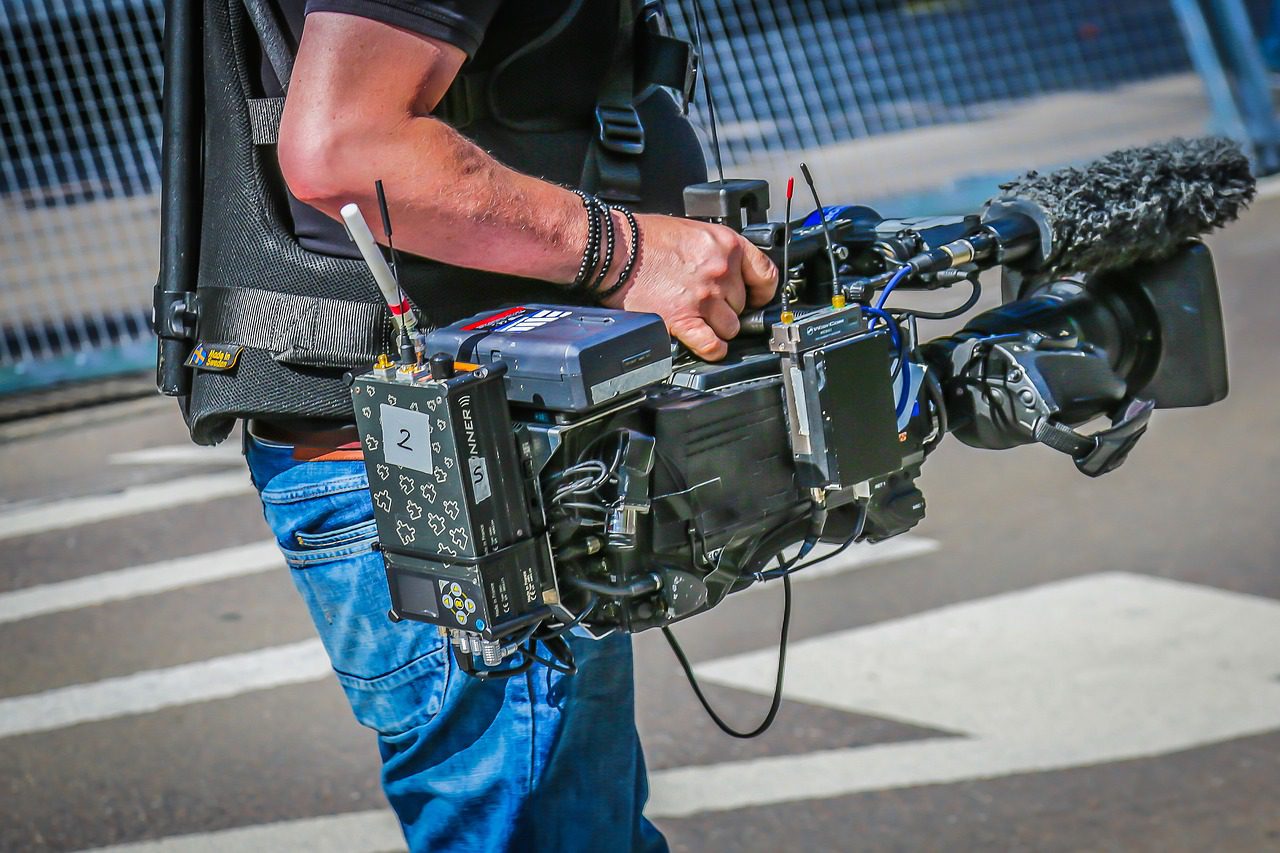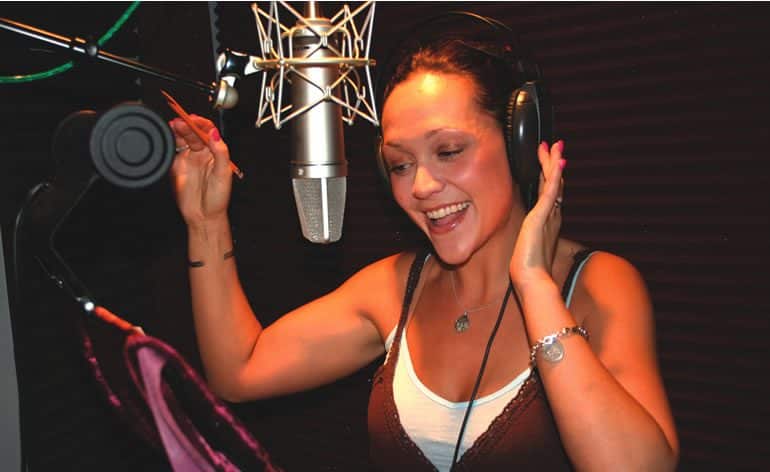Written by Jonathan Moore
I remember what they tell me about Tamara. And it isn’t good.
I’m preparing to shoot my first documentary, several individuals from my hometown strongly warn against using an old friend of mine, Tamara Douglas, in the film. But, I protest, this project is about the effects of the closure of the 50-year-old and 4,000-employee-strong textile factory on the small, tight-knit community in south-central Kentucky. Tamara is one such employee who unceremoniously loses her job and is struggling to make ends meet. Plus, I know Tamara to be articulate and entertaining. I consider her to be an excellent candidate to interview on camera.
No matter, they say. Tamara would not be the kind of person I would want to put in a film. She is outspoken and might say something that would be too opinionated, emotional and perhaps misconstrued. What’s more, I am reminded, Tamara is the kind of woman that is known to occasionally use some “strong” words when describing how she feels. One man insists that I need to focus on people that would simply give the straight facts and stay away from any emotional involvement.
And therein lies the problem with documentary. Many do not understand that documentary films are, in their heart of hearts, not objective, nor should they be. Documentary is subjective, personal and always a reflection of the filmmaker and his or her themes, emotions and perspectives on the story. Even the most sterile and factual documentary films are injected with some sense of the filmmaker’s creativity and subjective decision-making.
Therefore, documentarians must take care to choose the most interesting, articulate and effective subjects as possible. The filmmaker may be the one telling the story, but it will be the subjects – the people who are in the film – that will serve as her mouthpiece.
Depending on the nature and style of the documentary, some films may place more importance on the “performance” of subjects than others. And it’s no mistake that the term “performance” is used, as carefully selecting whom you will interview or follow around with a camera is not unlike casting actors for a narrative film.
There are a few things that one must look for – and do – when choosing individuals to be in your documentary. Below are some of the things this filmmaker does when scoping out subjects for a documentary.
Meet the Subjects
When time allows, one should create and ask for an opportunity to meet with a subject in person before shooting commences. Too many times, inexperienced documentary filmmakers speak with someone on the phone, set up an on camera interview and proceed to be disappointed. It pays to be prepared. Try meeting people without a camera. Have a cup of coffee. Talk about the project and your hopes for it and how you intend to use this person should you choose to do so. Simply get to know them – and vice versa. Sticking a camera and a couple of lights in someone’s face can be intrusive and daunting. And if they have never met you before, that tends to make them – and sometimes even you – all the more uncomfortable. But if you sit down over coffee or lunch and have a short, casual conversation – you can find commonalities and start to build a foundation of trust. And trust is a huge word when it comes to the relationship between a documentary filmmaker and his subjects. Get to know each other. It will pay off when you show up with a camera, bright lights and a crew. Or when you are following them around in public.
Measure Openness and Transparency
Often, during the initial meeting at a coffee shop or other low-pressure location, this is a good time to also ask them a few questions that you may want to ask during an actual on-camera interview. It’s a chance to see how they will respond, how open they are. For sure, there are no guarantees that come from this. A person can be totally open and articulate but, when the camera shows up, become pensive and shy. But, if they become this way when the camera is not there, then you have a pretty good idea of what you are going to get when you hit the red button: which may not be much.
Be sure not to dig too deep in the questioning at this first meeting. You want to save the good and best stuff for the camera. But if it’s a particularly difficult or emotional topic, you may want to just touch on this with one or two questions to see if they are willing to open up to you and give you what’s in their heart. See if they will start to give you the truth. If they do, then quickly and politely steer them in another direction. Again, save the good stuff for the camera. Remember to go easy on them. Be general and conversational.
See If They Have Physical Attraction
Of course, anyone who is physically attractive is going to catch the viewer’s eye. But that’s not what we’re talking about here. You are trying to discover if the camera loves them. Obviously, this doesn’t mean that the female subject need be a beauty queen or that the male subject a teen heartthrob. Rather, do you think the subject has expressive eyes that might be nice on camera? Do they use interesting – and genuine – facial expressions? What is their voice like? Are they able to verbally communicate in a fashion that is conducive to the telling of the story? Sometimes a subject will have the exact information that you need to get on film or video, but will not be able to verbalize it to you in a presentable way. Not everyone is cut out to be in a documentary film. Sometimes the most physically attractive person you can find will have the least to say. But a “Plain Jane” that you might not look at twice – may have an engaging personality, wonderful voice and be able to organize and articulate her thoughts in a beautiful way. What’s more, emotion, feeling and truth may emanate from her eyes and face. When talking informally with a potential subject, pay attention to their physicality.
Check for Availability and Guard Against Fair Weather Subjects
It would behoove you to be very direct and forthright when informing a subject of your intentions for them in your film. This includes how much of their time that you will need. You may be looking to do a one-time, sit-down interview or perhaps you are looking to spend a longer amount of time with someone over a period of days, weeks or months. Whatever the case, you will want to be honest about this and pay attention to their reaction. Some individuals are unaware of the time commitments that exist in documentary filmmaking and if they are unwilling to give you what you need, you need to know that as soon as possible.
Depending on what kind of project you are doing, you will want to make it clear that you intend to live up to your responsibilities as a filmmaker. If you are producing a short about the daily life of a postman, you will need to let them know that you intend to follow them around on a certain day whether there is beautiful weather and sunshine and they look great. Or if it is raining and they are tired, wet and irritable. If it is your intention to give a realistic account of what their job is like, then you must make it clear that you intend to be there for the good and the bad. They must be on the same page as you.
If you are doing a more serious project, about the mother of a man on trial for murder, you will need to communicate that you are making plans to document the reaction of the jury’s verdict, whatever it may be. If the man is found guilty, you will want the subject to know that you are going to be there for the sadness and disappointment just as you would if there is joy and jubilation over a more favorable verdict. You cannot afford to have “fair weather” subjects involved in your documentary. They must be all in or not in.
The above suggestions are only a beginning, but are vital to your success in screening and choosing good subjects for your documentary. These can serve as a starting point for more detailed selection processes that you will develop on your own.
A documentarian must choose the very best because she needs the film to be the best it can be. She cannot be swayed by sentimentality when choosing who is going to be telling her story. One of the most difficult things for a documentarian is informing a potential subject that he or she doesn’t represent that which you want to be in your film. As hard as that may be, if you’ve given the potential subject fair consideration, you must absolutely be professional about it – and move on. Your film deserves the best you can give it.
I do indeed interview Tamara. I disregard what others tell me and go with my own hunches. In fact, Tamara becomes the main subject of the entire documentary and does a wonderful job. And she only uses a couple of “strong” words!






